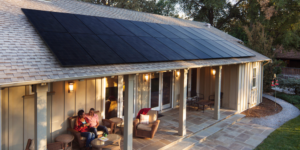This video shows how G Systems’ radome test system validates accurate radome repair and ensures aircraft passengers are safe
An airplane radome often serves as the nose cone of the aircraft, performing two crucial functions: first, to be aerodynamic and, second, to be transparent to the plane’s weather radar. What happens, however, when aircraft radomes don’t function correctly? To borrow a phrase that originated in aerospace, “Houston, we have a problem.” G Systems recently designed a solution.
Aircraft radomes are often damaged by bird strikes, hail and the occasional errant mobile staircase. Damaged radomes usually lead to damaged data integrity. When a radome is cracked, water ingresses into the layers of the dome and, to the radar, appears to be a giant thunderstorm right off the nose of the plane. This creates demand for an aeronautical nose job.

There are companies, including a customer of G Systems, that specialize in structural, rather than cosmetic, radome nose jobs. Once aircraft radomes are repaired, they must be tested to show that they are indeed transparent to the weather radar. To validate post-repair radome transparency, G Systems created a test system.
We use a pair of antennas, in conjunction with vector analysis components, to measure the free space loss between the antennas. Then we calculate the reduced transmissivity when a radome or other test media is interposed between the antennas.
The radome validation test is performed in the same location as radome repair. The G Systems test provides precise validation to ensure the radar signal passes through the radome with minimal loss of signal. This translucency provides pilots with undistorted weather information, traffic data and measurements, helping pilots to safely navigate the airspace—errant mobile staircases and all.
Additionally, rather than outsourcing the test component after radome repairs, the customer saves time and money, and mitigates risk with onsite use of our aircraft radome test system. “Houston,” in this case, no longer has a problem.
Download our free white paper, “Five Best Practices for Quality RF ATE Measurements.”
Note: G Systems would like to thank ISP Supplies and National Instruments for providing equipment to help us build the demonstration of our aircraft radome test system. The demo debuted at NIWeek 2017.




